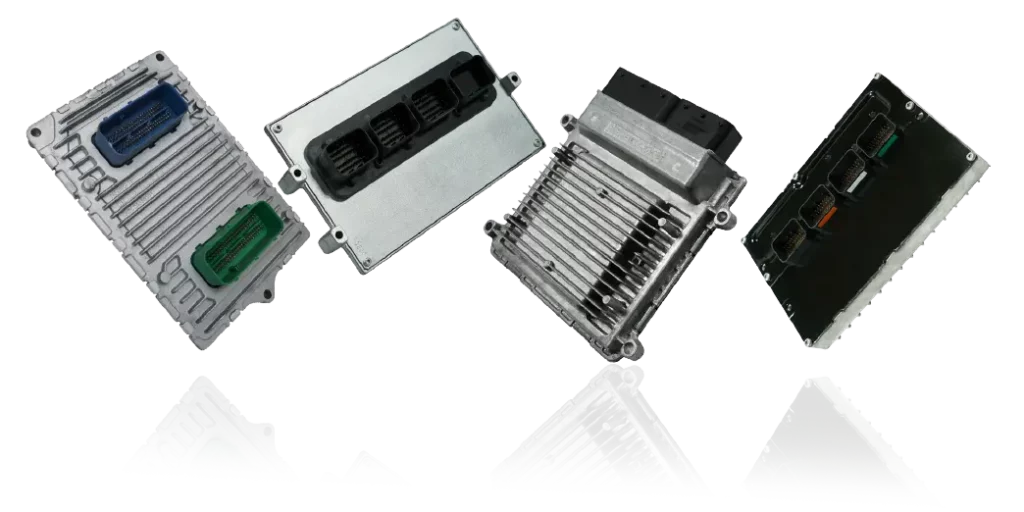GLOSSARY OF TIPM TERMS

- Auto Stop-Go The Auto Stop-Go feature is a fuel-saving mechanism that shuts off the engine when the vehicle is at idle, such as at a traffic light. The engine is automatically restarted as soon as the driver takes his or her foot off the brake pedal. The system has a battery pack, and uses a modified alternator that generates current and also works as a starter to restart the engine. If equipped, the TIPM is specially designed to support this feature.
- cab and chassis "Chassis Cab" is the official designation of trucks Chrysler sells for further customization to particular commercial needs. The add-ons may be ordered from Chrysler or installed by a 3rd party "Upfitter" Provider. RAM 5500, 4500, and sometimes 3500's are marketed this way.
- Core Fee A Core Fee is an industry-wide practice where a charge is added to the cost of an auto part, but is money you get back when you send in the old, broken unit. The broken unit is then rebuilt for resale to a downstream customer. Most vendors charge a steep, up-front core fee $150 or more, and you only get back you're own money. MAKS charges less, and will double your money back.
- Expansion Block Adjacent to the TIPM/BCM is a Fuse & Relay Expansion Block. The Expansion block contains no circuit boards and is merely a platform to house additional fuses & relays. Except in cases of extreme corrosion, the need to replace the Expansion Block are exceptionally rare. But you may still have a failure of one or more of its fuses and relays, which are easily swapped. Body Control Modules are detachable from the TIPM and are each sold separately.
- FCM While the IPM houses all the fuses and relays, the Front Control Module (FCM) handles the logic in directing electrical power throughout the vehicle. FCMs fail far less frequently than IPMs, so it is a safe bet to address the IPM first.
- FuseA fuse's sole purpose in life is to fail. Put into electrical circuits, it is designed to burn out when an abnormally high level of current begins passing through the system due to a short or other problem. It protects downstream electronics from damage (and in extreme cases, from vehicle fires).
- HID Headlamps HID Headlamps HID, or High Intensity Discharge lights utilize Xenon gas to produce a very bright, bluish-white light, while LEDs produce a purer white light, and traditional Halogens a more yellowish light. The current draw characteristics of HIDs are significantly different than Halogen or LEDs, demanding special consideration in the TIPM design.
- IPM IPM stands for Integrated Power Module. Only after 2006 did Chrysler add "T" for "Totally" and begin referring to the device as a TIPM.
- JK versus JL Chrysler assigns model codes to its vehicles that change with each generation of the vehicle, corresponding to substantial changes in vehicle architecture. In 2018, Chrysler offered both the legacy Wrangler "JK" series (2008 — 2018) and its successor "JL" series (2018 — present). JK and JL use entirely different TIPM designs. The easiest way to tell which generation you have is by the presence of fender-mounted signals, but always select a TIPM by part number to be sure.
- Oval Plugs The two center-most plugs on IPMs prior to mid-2003 have an oval shape making them completely incompatible with later, but identically-featured, vehicles.
- Part Number TIPM Part Numbers are in the format, nnnnnnnnAA, (8 numeric digits followed by 2 alphabet characters) and can be found printed on a sticker affixed to the side of the TIPM. The two trailing alpha characters merely refer to the date of manufacture and are interchangeable. Your TIPM may or may not include a leading zero, and may be preceded by a "P" or "P/N" which is merely a field heading and is not integral to the part number.
- Relay Relays are the electronic "On/Off" switches inside the TIPM and are often the problem when vehicle features get "stuck on" or "stuck off". The relays that most commonly fail are soldered inside the TIPM and cannot be easily swapped by the vehicle owner.
- RVC Vehicle Configuration
- Square PlugsThe two center-most plugs on IPMs after mid-2003 have a square shape making them completely incompatible with earlier, but identically-featured, model year vehicles.
- TracesTraces are the metallic lines you see criss-crossing circuit boards. They are the electronic highways that connect the various electronic components of the TIPM.





